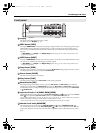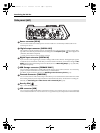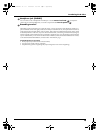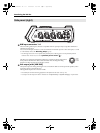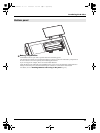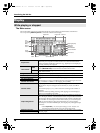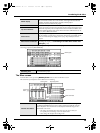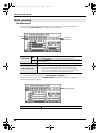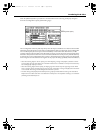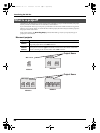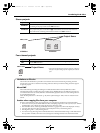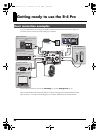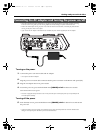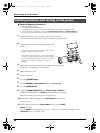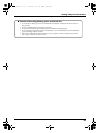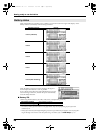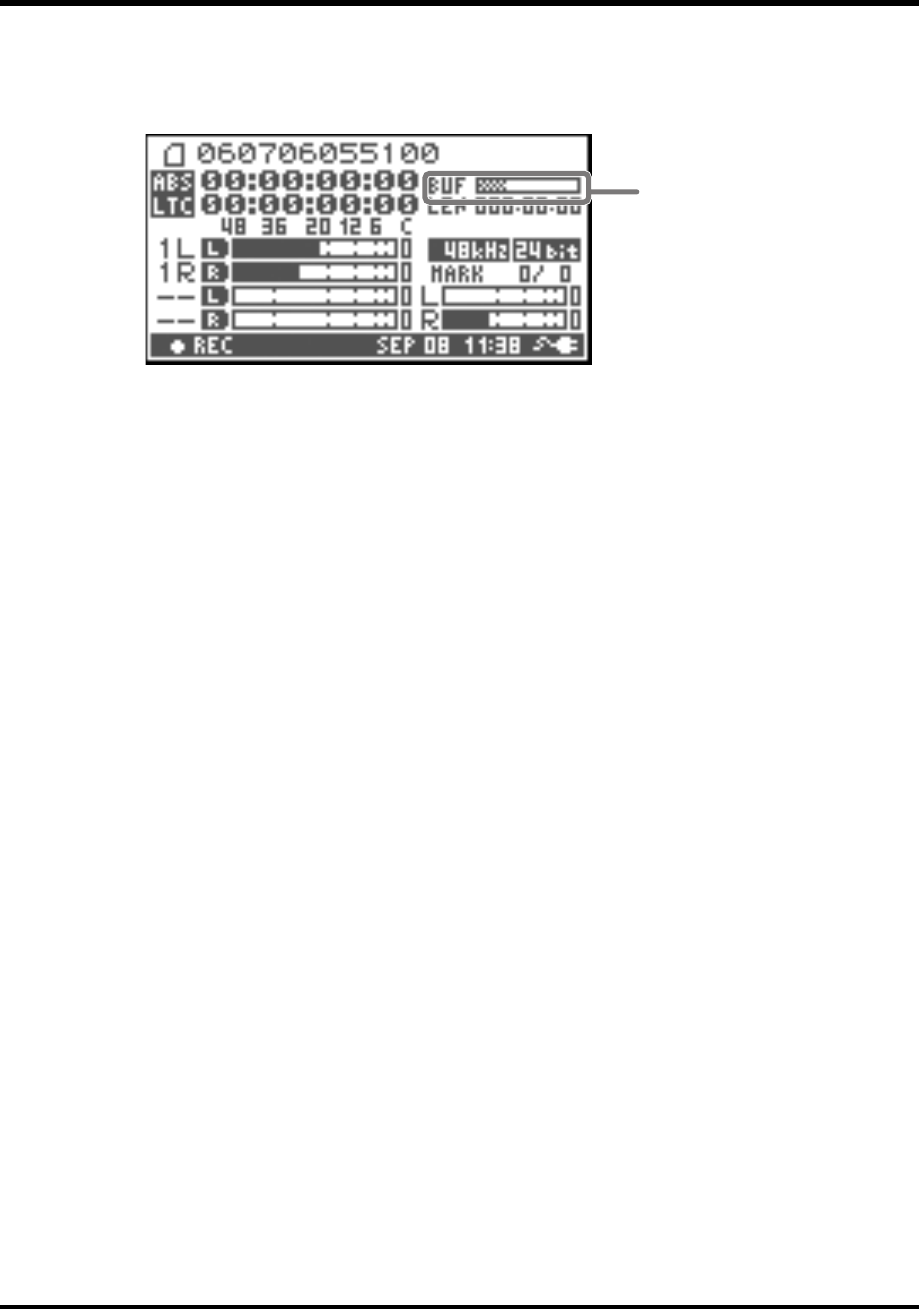
21
Introducing the R-4 Pro
When the [DISPLAY] button is pressed twice while the Main screen is showing, the display changes to
show the recording buffer capacity (BUF: buffer gauge).
The recording buffer is memory that temporarily stores the input sound before it is written to the hard disk.
The buffer gauge indicates how much of the recording buffer has been used. Normally, the recording buffer
never reaches capacity because input sound is immediately written to the hard disk. However, if data
cannot be written to the hard disk or if the hard disk processing capacity decreases and writing data to the
hard disk is delayed due to the R-4 Pro use environment (vibrations or sound pressure), then the data may
accumulate to an excess and the buffer may overflow. (The hard disk processing capacity may be affected
if file arrangement on the disk becomes irregular due to project files being repeatedly written and deleted.)
* When the recording buffer is close to capacity, the “HDD buffering” message is displayed. If vibration or sound
pressure may be the cause, take the R-4 Pro to a location where there is no vibration or sound pressure and check if
the recording buffer capacity is restored.
* When the recording buffer reaches capacity, the buffer gauge moves all the way to the right edge and the “HDD
Slow!” message is shown. Recording does not stop even if the “HDD Slow!” message is displayed, but some sound
is not recorded. This message will not disappear until a button is pressed.
* The same message is displayed if the hard disk processing capacity is diminished and writing to the hard disk is
delayed even in a location where there is no vibration or sound pressure. For important recordings, we recommend
formatting the hard disk before use.
Remaining buffuer capacity
R-4_e_new.book 21 ページ 2006年11月20日 月曜日 午後1時9分



